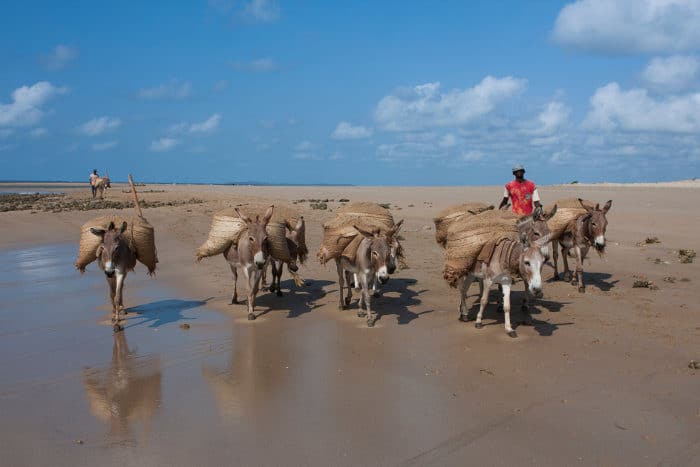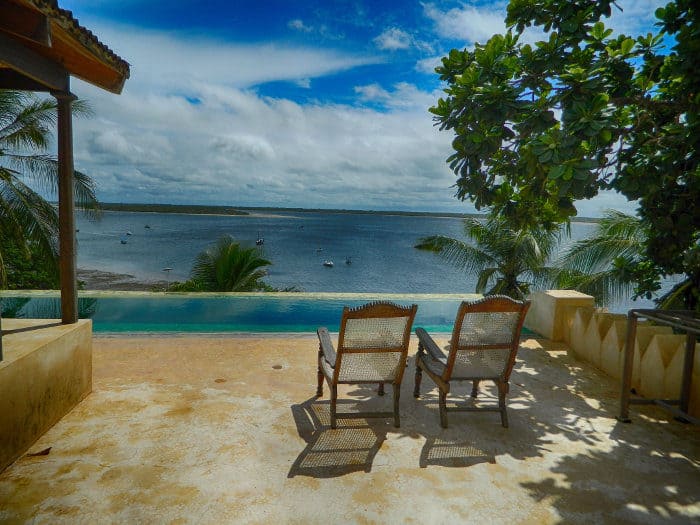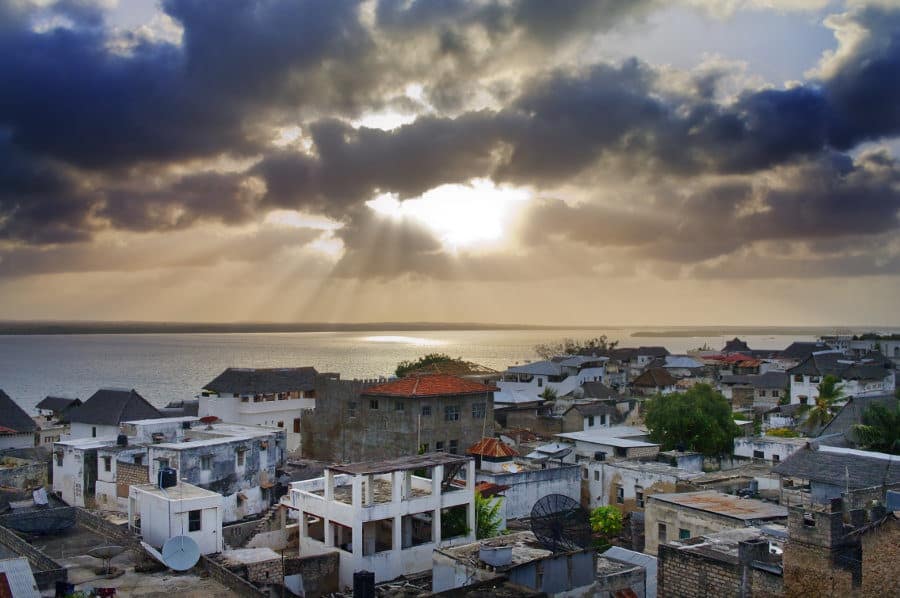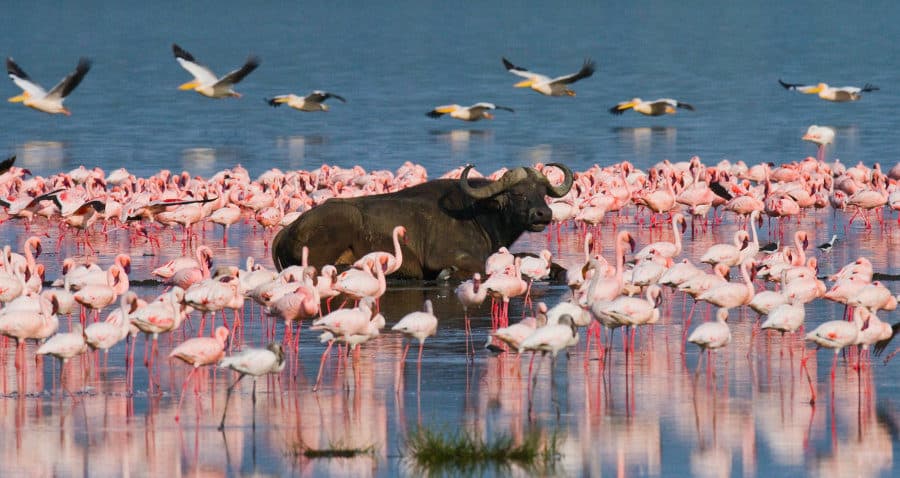Coral houses glisten beneath an equatorial sun in Lamu. A wooden dhow sails on the wind, easing through turquoise waters. A fisherman calls out, before the euphoric call to prayer emanates from a small mosque.
Welcome to Lamu. You may have heard of Zanzibar, an island of rich Swahili culture, UNESCO World Heritage Stone Town, and almost a millennia of trading history. Lamu has all these things, as well as endless white sand beaches and Indian Ocean waters so turquoise you are almost blinded.
Zanzibar’s popularity has soared over the last ten years. The Tanzanian island remains beautiful and blissful in parts, yet there has been an ugly rash of developments, along with some of the negatives that come with rapidly increasing tourism.
In Lamu you can almost be alone. There are so few other tourists that most visitors go out of their way to look for them.
This ancient place is not unknown. But it does feel hidden. Lamu is a Kenyan treasure that people either don’t know, or simply forget about. This detailed travel guide explains how to get to Lamu, what to do, and why you need to go now.
An Introduction to Lamu

What and where is Lamu?
The similarities to Zanzibar are stark. Lamu is an archipelago of islands located along Kenya’s northeastern coast. These islands are roughly 600 km north of the Zanzibar archipelago, which is part of Tanzania.
Lamu Town is the main settlement on Lamu Island, the main island destination for visitors.
How do you get to Lamu?
The only safe means of traveling to Lamu is by plane.
Kenya’s coastal highway has been targeted by Somalian terrorists and is considered a no-go area by most international governments. Most advice urges against all but essential travel on this highway.
All vehicles on the highway travel in convoy, so there is protection in number. This may make it safer but it also means the journey is long and tedious.
Lamu’s airport is located on Manda island. There are multiple daily flights from Nairobi, the Kenyan capital, along with Mombasa and Malindi on the Kenyan coast.
All these flights are by light aircraft. After landing on Manda you will need to make a five-minute boat transfer to Lamu. Most hotels include this but it is easy to arrange on arrival as well. Note that there are no international flights to Lamu.
How do you get around Lamu?

There are no cars on Lamu island. The roads are sandy and dusty, plied by donkey carts and the occasional scooter. Walking is the best way to get around. The town is small and easy to navigate, with the main sand track skirting the coast.
For longer journeys you will travel by boat. Traditional wooden dhows are the main method of transportation here, sailing on the wind to connect islands, sandbanks, and remote places on Lamu island.
The Atmosphere on Lamu Island

Before thinking about things to do, consider how a holiday in Lamu is going to feel. You can comfortably tick off the main sights and activities in just two days, but this is an archipelago where you will want to spend at least a week.
Swahili tradition and culture
Traditional Swahili culture remains strong throughout Lamu. It is a culture very similar to that of Zanzibar.
Tourism hasn’t necessarily changed the culture of Zanzibar. However, the authentic culture is harder to find, as you must sift through tourist junk and international influence. In Lamu there is no escaping the old Swahili lifestyle.
Five times a day the call to prayer rings out from multiple minarets. They practice a call and response routine, with one mosque singing a question and others returning the poetry.
Islam is an integral part of a culture that is both Arab and East African. The integration of these two different cultures formed Swahili, an island culture different to what you experience on the East African mainland.
Art is another unmissable part of Lamu’s culture. You will admire ornately carved doors, geometric patterns and beautiful Arabic calligraphy.
The food is also distinctive, a mix of Arab flavours, fresh seafood, exotic spices, maize, rice, and the fullness of mainland African meals. Then there is the architecture, one of Lamu’s premier highlights.
Swahili Architecture

Most of Lamu’s houses are constructed from coral. The coral is harvested at low tide and used to create remarkable structures, some of which are over 300 years old.
This coral architecture is at the forefront of Lamu’s inclusion as a UNESCO World Heritage Site. Rather than palaces and glamorous buildings, you will discover the beauty of Lamu’s vernacular coral architecture.
Most of these coral houses are painted white, creating a sense of harmony on the streets. The design is open, with columns and terraces. Many of these terraces are very elaborate and embellished with a Swahili artistic style.
Almost every Lamu building is made in this traditional style, including nearly all the hotels. You can be staying in a three century old coral house, with a private second floor terrace overlooking the Indian Ocean.
An old-world and laid-back vibe
Island life is always tranquil wherever you are. Lamu is so laid-back it is normal to see locals dozing on the streets and at restaurants. With no traffic and no easy connection to the mainland, the island’s atmosphere has remained just as it must have been 200 years ago.
This is where you walk slowly, say hello to strangers who pass, and sink all your senses into the atmosphere. A famous saying is appropriate here: in Europe they have watches, and in Africa they have time.
This slow, old-world atmosphere is Lamu’s main attraction. You can spend lazy days on the beaches, quiet hours at cafes, and lose a few hours drifting away on a terrace. After two days you will forget about your watch, and find that time can drift splendidly when you don’t think about it.
Things to Do on Lamu Island

Nothing
Some of the best vacations are all about doing nothing. Arrive in Lamu and you will instantly slow down. You can do nothing…everywhere.
Mostly you will be doing nothing at the hotel, by lounging around a pool or sitting back on a terrace. They have a saying here – pole pole. It means “slowly slowly” and is exactly how you will be thinking.
Exploring the Old Town
Kenyatta Road is the main drag through the Old Town, although it is more like a broad alleyway than a street. Along here you will see crumbling Swahili architecture and workshops, where jewellers hand make silver gifts and craftsmen work on dhows.
Most of the cafes and restaurants are clustered around the jetty. The classic thing to order is a cheap fruit-shake. Note that the coffee is thick and very gloopy, so not for all tastes.
In the Old Town you will find Lamu Fort and the Lamu Museum. Both are small and easy to explore. Lamu House Hotel is the most impressive of the old buildings. It has been carefully restored and suggests an 18th-century glamour. Stop by for a meal or a cocktail, then continue further along the seafront to the end of old town.
You can comfortably walk all of the Old Town in just 30-40 minutes, however you can spend many days exploring its nooks and crannies.
Around the jetty you do get a little hassle from touts selling boat tours. This is mostly good-natured and the best tactic is to say no. Any maybe or indecision can lead to you being annoyingly followed along the promenade.
Exploring the coast on a dhow

Dhows are magnificent boats. Hand carved from wood they are the traditional means of getting around the Lamu archipelago. Locals still use these boats to go fishing and travel to the mainland. Now they are also used for tourists.
A lack of other visitors means every dhow trip is private and customisable. Part of the attraction is sailing, especially in the late afternoon, just before sunset. For the actual sunset the best views come from near Manda island.
Dhow captains will also take you to sublime snorkelling spots up and down the coast. The marine life is Indian Ocean quintessence, with a multitude of colourful fish and the odd pelagic.
Reefs are in okay condition. Zanzibar does have better snorkelling and you can go swimming with dolphins, but at least in Lamu there are no other people in the water. Tropical and deserted white beaches are another part of a dhow itinerary.
The Lamu beaches

This is the Indian Ocean. The beaches are white beyond imagination, almost blinding beneath the midday sun. Without sunglasses you will struggle.
These are the kind of beaches that dominate tropical postcards, the kind of beaches that attract millions of people to Indian Ocean islands like the Maldives and Seychelles. Lamu’s beaches are almost always deserted.
The jetty and old town are tucked away in an inlet. The island’s main beach extends from Shela, a small village that is a 30-minute walk from the jetty. Here, there is nothing but white sand. So take a walk and find your own piece of paradise on the Indian Ocean.
Another relatively easy to reach beach is Ras Kitau, situated on Manda. Local speedboats can take you there for a few dollars. Dhows are required to reach any other beach and there are dozens of different ones to try. Do not expect to see other people. In Lamu you have the sand to yourself.
Swahili food

Swahili food is integral to the visitor experience. You can find fresh seafood all around the Old Town, at restaurants and small outdoor barbecues.
Hotels and guides can arrange home-cooked Swahili feasts as well. These are delivered to your room and include dishes like pilau (a delicious spicy rice), samosas, fish curry, mango chutney, plus fried snacks tasting of cinnamon, cumin and clove.
The ruined city of Takwa
An easy half-day trip from Lamu, Takwa is an abandoned city of crumbling coral houses and charm. Even the guides don’t know why it was abandoned in the 17th century, but it was once one of the largest towns on the East African coast. This is a stunning place for photographers, or to simply explore and imagine life 500 years ago.
Shela

Smaller and even prettier than Lamu Old Town, Shela is a village overlooking Lamu Island’s longest beach. Other than a few hotels there is not much to see here, but it is a beautiful place to spend a morning or afternoon, especially when combined with the beach.
Where to Stay on Lamu

There are dozens of guesthouses on Lamu Island, as well as a handful on Manda. Almost all of these are large traditional buildings that have been converted for tourism.
Expect 5-8 rooms, excellent personal service, and local Swahili style. Prices vary but are mostly very good value and cheaper than in Zanzibar.
The key decision to make is whether to stay in Lamu Old Town or Shela. The town has more cafes and things to see. There is a little bit of bustle and you can experience more of the culture. Shela is better for a beach break or for an extended stay.
It is more expensive to book a guesthouse or hotel online. There is plenty of accommodation on Lamu, so you can get a great deal when you arrive.
One tactic is to book a guesthouse for just one or two nights. Then once in Lamu you can have a look around, negotiate a good price, and take your pick of the best rooms on the island.
Yes, Lamu is Safe

Do not be scared away. There has never been a terrorist attack in Lamu and the archipelago does not have a travel advisory warning. Perceptions of safety have kept visitors away from Lamu. Which can be a good thing for visitors. Visit Lamu now and you will have the island virtually to yourself.
Lamu has an intoxicating blend of island life, Indian Ocean beaches, gregarious culture, and things to do. Those who are brave enough to go will love it.



